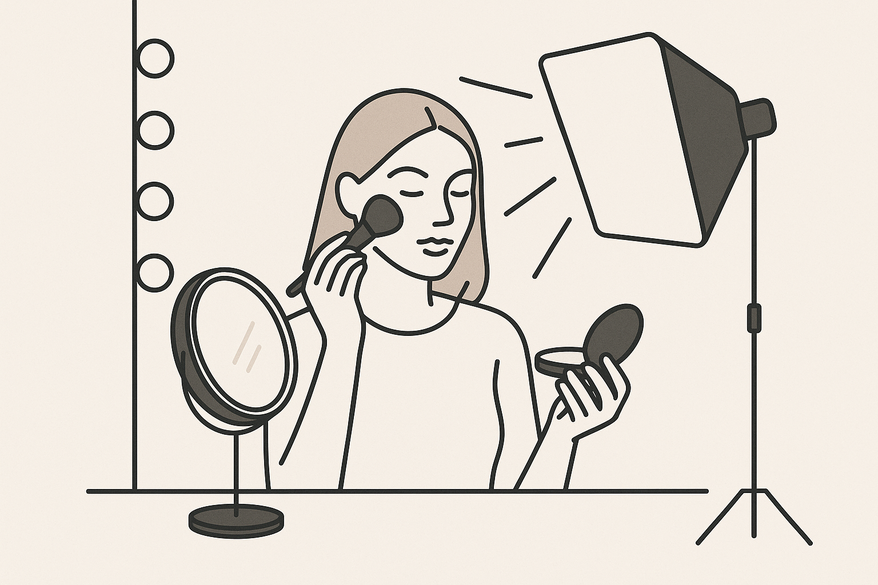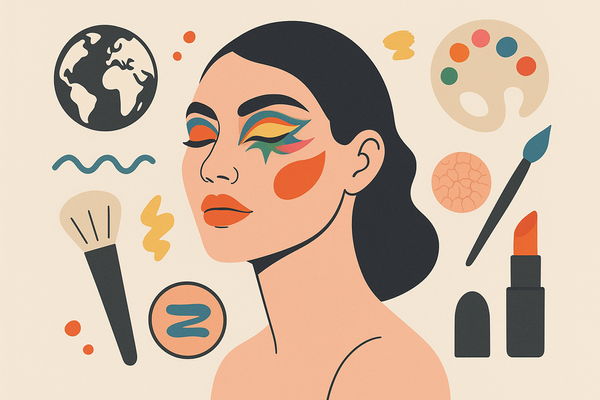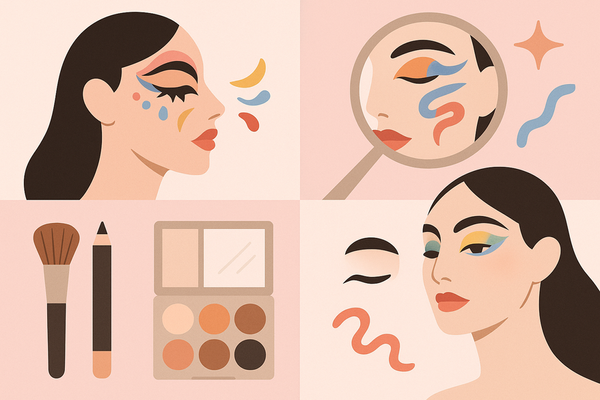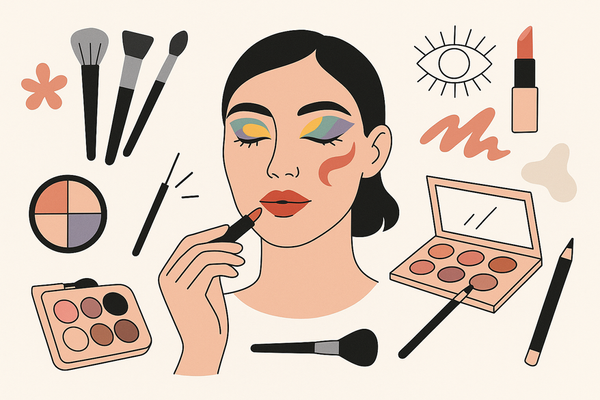Mastering Makeup Lighting Techniques: Your Guide to Flawless Application
Learn makeup lighting techniques to ensure true color, even coverage, and professional results. Master placement, diffusion, and brightness for flawless makeup.

Estimated reading time: 3 minutes
Key Takeaways
- Use neutral daylight (5000K–5500K) and high CRI lighting for accurate color matching.
- Soft light—via softboxes or diffusers—reduces harsh shadows and highlights makeup details.
- Ring lights, LED panels, and natural window light each serve unique application scenarios.
- Position main and fill lights strategically at eye level and 45° angles for even coverage.
- Test and refine your setup by checking in a mirror and on camera to avoid texture issues.
Table of Contents
- Introduction
- Understanding the Basics of Makeup Lighting Techniques
- Common Makeup Lighting Techniques
- Step-by-Step Guide to Setting Up Ideal Makeup Lighting Techniques
- Expert Tips and Additional Considerations for Makeup Lighting Techniques
- Conclusion
- FAQ
Introduction
Makeup lighting techniques are the strategic use of lighting setups—ring lights, LED panels, softboxes, and natural light—to ensure makeup is applied evenly and appears true to color. Proper techniques help you see fine details, match foundation and eyeshadow accurately, avoid harsh shadows, and ensure your look holds up in any environment.
In this guide, you will learn how different lighting approaches—from everyday at-home routines to professional studio setups—impact your makeup results and how to set up and troubleshoot your own illumination system. For a deep dive into selfie-specific lighting setups, check out our detailed post.
Understanding the Basics of Makeup Lighting Techniques
Natural vs. Artificial Lighting
- Natural Light
– Balanced color rendering for true-to-life makeup appearance.
– Best near a north- or east-facing window with indirect sunlight. - Artificial Light
– Incandescent: Warm and flattering but may distort hues.
– Fluorescent: Cool and harsh; can wash out pigments.
– LED: Adjustable brightness and high CRI for accurate color fidelity.
Color Temperature & Brightness
- Color Temperature
– Measured in Kelvins (K).
– Neutral daylight sits around 5000K–5500K for true color matching. - Brightness
– Adequate lumen output prevents missed spots or blending errors.
Diffusion (Soft vs. Hard Light)
- Soft Light
– Achieved with softboxes or diffusers to scatter illumination.
– Minimizes harsh shadows and creates a flattering wraparound effect. - Hard Light
– Direct beam producing crisp shadows; used sparingly for dramatic contour.
How Lighting Affects Makeup Appearance
- Color Accuracy prevents mismatches in foundation or eyeshadow tones.
- Shadow Correction ensures even contour and highlight distribution.
- Texture Visibility reveals streaks, flashback, or powder buildup before it’s too late.
Common Makeup Lighting Techniques
Ring Lights
- Definition: Circular LED light delivering even, shadow-free illumination.
- Pros: Creates a flattering catchlight in the eyes; easy setup; mimics daylight.
- Cons: Can cause reflections in glasses or shiny skin; requires a bulky stand.
- Best For: Everyday makeup, online tutorials, selfies, video calls.
Softbox Lighting
- Definition: Rectangular or square box with internal diffusion panels.
- Pros: Soft, wraparound light that reduces hard edges.
- Cons: Larger footprint; longer setup time.
- Best For: Professional studio makeup, editorial shoots.
LED Panels
- Definition: Flat-panel lights with adjustable brightness and color temperature.
- Pros: Precise control, high CRI (>90), portable options.
- Cons: Can be harsh without diffusion; higher price point.
- Best For: Pro studios, on-location shoots.
Natural Light Setups
- Definition: Indirect daylight from windows or skylights.
- Pros: Free, accurate color, soft shadows.
- Cons: Varies by time of day; limited hours.
- Best For: At-home applications, daytime looks.
Comparative Summary
Everyday Makeup: Ring light or window light for balanced illumination.
Professional/Photo-Ready: Combine LED panels and softboxes at 45° angles in front of the face for maximum color fidelity and depth.
Learn 10 makeup photography hacks to elevate your beauty shots.
Step-by-Step Guide to Setting Up Ideal Makeup Lighting Techniques
- Step 1 – Choose Your Location
Near a large window for natural light or clear space for equipment. - Step 2 – Select Your Light Source
Opt for a ring light or LED panel with CRI ≥95 for true-to-life color accuracy. - Step 3 – Position Main Light
Place directly in front of your face at eye level. Avoid overhead placement that casts unflattering shadows under the eyes and nose. - Step 4 – Add Fill Lights
Use softboxes or secondary LED panels at 45° angles on either side to soften side shadows and create depth. - Step 5 – Adjust Brightness & Color
Set to neutral white (~5000K) to mimic daylight; brightness should fully illuminate your face without glare. - Step 6 – Test & Refine
Check in the mirror and with your phone camera; tweak height, angle, and diffuser placement until the light wraps uniformly around your face.
Expert Tips and Additional Considerations for Makeup Lighting Techniques
- Use diffusers or softboxes on LEDs to eliminate hot spots.
- Avoid overhead or side lighting that casts shadows under eyes and nose.
- Check makeup in multiple light sources—daylight and artificial—to ensure consistency.
- For photo/video: add a reflector or background fill light to prevent a flat appearance.
Troubleshooting
- Shadows Remain? Add a second fill light or reposition the main light.
- Reflections on Skin? Use a matte backdrop and lower overall brightness.
- Color Appears Off? Always test shades in neutral 5000K light before finalizing.
Conclusion
Proper lighting techniques ensure true color, even coverage, and professional results across everyday, studio, and photo scenarios. By mastering placement, diffusion, brightness, and color temperature, you can avoid shadows, mismatched shades, and texture issues. Experiment with natural and artificial light, adjust CRI settings, and use diffusers to create a setup that suits your space and style. For camera-ready makeup secrets, see camera-ready makeup secrets.
For those looking to perfect their look further, Makeup Check AI offers instant virtual analysis under different lighting conditions.
FAQ
- How can I avoid harsh shadows during makeup application?
- Use diffused lighting such as softboxes or ring lights positioned at eye level and add fill lights at 45° angles to soften shadows.
- Why is CRI important for makeup lighting?
- Color Rendering Index (CRI) measures how accurately a light source reveals colors. A CRI of 95 or above ensures true-to-life makeup hues.
- Can I use natural window light alone for makeup?
- Yes, indirect daylight from a north- or east-facing window provides soft, balanced illumination but varies throughout the day.




